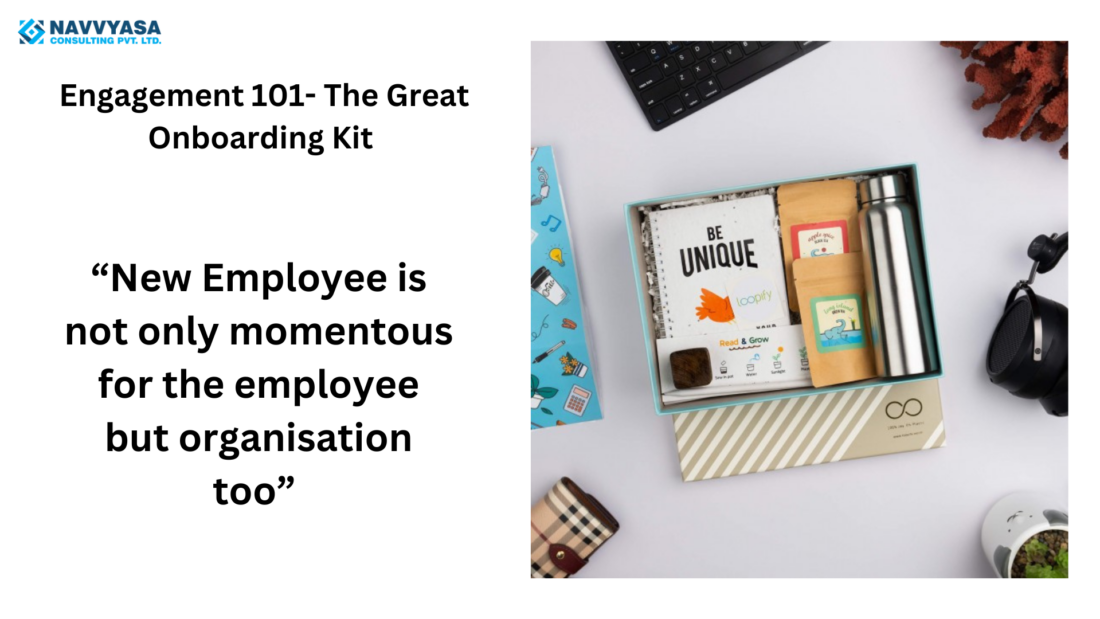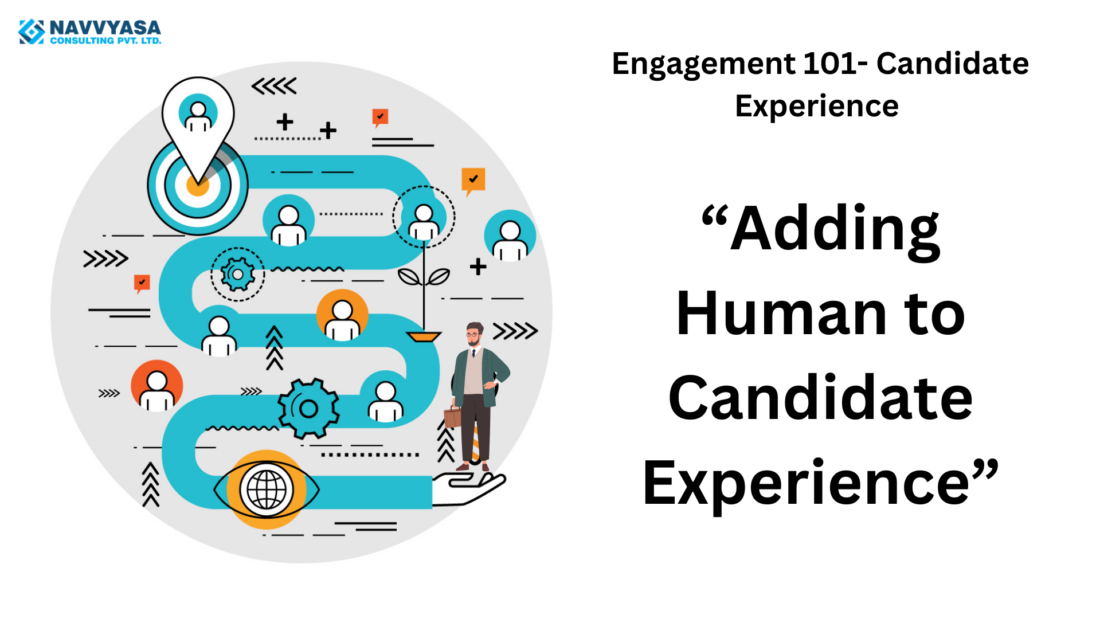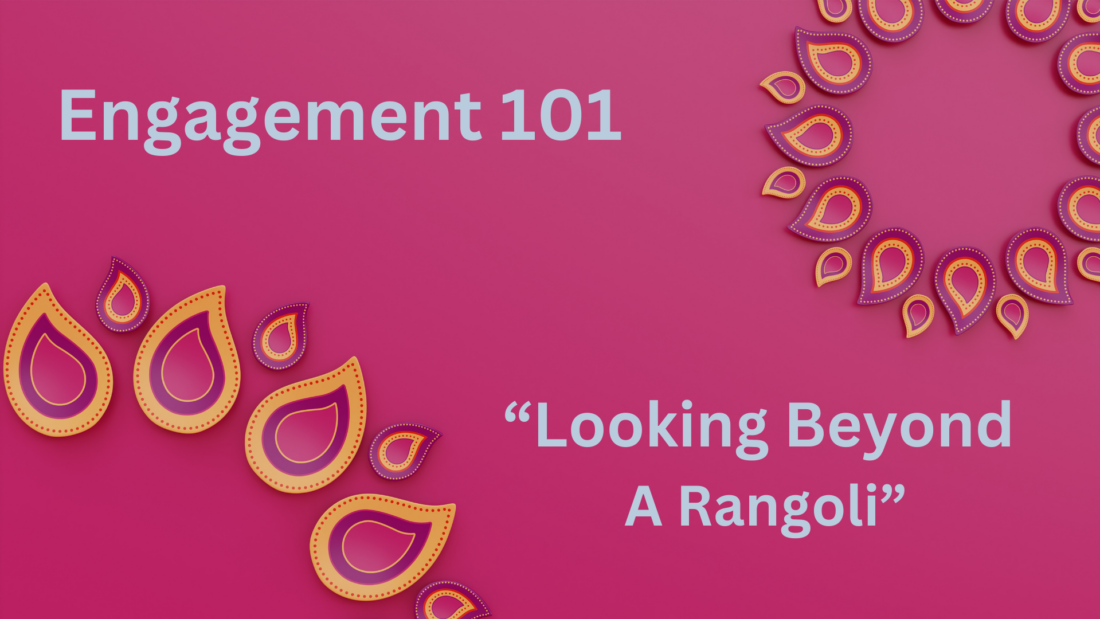The first footsteps in the organization if marked with apathy or regularity, lead to disengagement early on. There is no two ways about it that having a great onboarding is vital to welcoming new employees. It is about giving them all the resources that help them perform and settle in the organization.
During the peak of COVID, great onboarding meant a great Onboarding Kit. From fancy tumblers to t-shirts to sleek gadgets, organizations were going above and beyond to give that personal touch which was lacking due to the remoteness of employees. Now, even though a standard practice the oomph has gone from the Onboarding Kit.
As we enter the era of Back to Office, the onboarding kits are slowly making way for a more personalized touch at offices, from lunches to buddy programs and regular check-ins during hyper-care (first 90 days) period.
The question I posit is whether Onboarding Kit or Not?
Well, a good onboarding has to have two parts – 1. Introduction of the Company and Policies. Honestly, if an employee is not told of all HR policies on Day 1, there will never be another day. Company values and business propositions are the secondary agenda on the list. Even if the employee connects 10% on the first day it is enough to tether them to the organisation.
Also, good preparedness on the first day takes it to a whole another level- get their emails, IDs, and other resources pooled before they join and you are looking at a streamlined onboarding process. It doesn’t need a band or a welcoming crew, but a good step-by-step process to induct a new employee.
One of my best onboarding I think was with my first company, we got a three-day induction with leadership and understood what the company stood for. If someone asked me today what is TCOC I might still be able to tell all and it has been almost 8 years since I left that organisation.
Instilling values is a long-drawn process and requires effort at every step. But once it becomes a standard practice it is easier to replicate at mass scale.
It is harder to do so remotely, so an onboarding kit helps build that moment of happiness with the employee but alas as we move to more office setup, we are doing less of these.
So perhaps smaller mementos are in order, a laptop with personalized stickers, a shipper, or perhaps a photo frame to keep on your desk. A small knick-knack helps the employee feel their desk is their own but also reinforces that being a new part of the organization is momentous for the organization too.
A small effort towards making your onboarding standard and special is all you need for it to leave an impression that helps the employee navigate the first week jitters and make them feel at ease.
Adding Human to Candidate Experience
“Engagement may seem like it begins with the employee but Engagement starts with Candidate Experience.”
“HR have ghosted me” One of the very valid feedbacks we get from candidates is low engagement from recruiters.
Given that recruiters are hiring for multiple positions and don’t usually have the bandwidth to reply to each and every candidate, for a simple reason of sheer magnitude of hiring that happens. (Forgive them a little 🙂 )
But there are a few ways to make the candidate experience both personalized and where the candidate doesnt feel ghosted by HR.
Firstly, the recruiters should focus on building the image of the employer with few choice words, especially in start-up times. How do you come across is the main part, especially the first call and interview. This is Human Resources, neither you nor the candidate is indebted to “Getting the Job”.
Be honest, and say only if we like your profile, we will get back. Be consistent, if you are not able to reach back to a candidate drop them a message nonetheless.
“Remember every candidate in the process, is an employee in the making.”
This reminds me of one of the organizations where I was ghosted on the day of the interview but you won’t be able to guess that I did end up working there and perhaps, was one of the best tenures for me.
As I said the recruiter has to be human as the candidate is one.
Secondly, how do you make sure that 100s of people are feeling ghosted? This is resolved simply by making clear statements. “We will get back shortly” shouldn’t mean that you talk to the candidate in 20 days. Make sure you use the right words. Get your script in place and make sure you can create the company image as the interview process goes on.
And get back to them shortly, seriously, be a responsive hiring organization.
As for feedback, not every time recruiters get the best feedback from the hiring manager. So give feedback which is sandwiched between two great points about the candidate and one point where improvement is needed.
I know, honestly is desired but sometimes it is okay to be kinder than honest. Let them know there is always a next time.
Perhaps throw a Rangoli in the mix to switch things up. I kid. I kid.
On the other hand, to all candidates remember, your recruiter today is your colleague sometime later. A little humanness from your end will not go to waste. So show up when you say you will show up. If you hate being ghosted by recruiters, ghosting them back is only bad karma.
Engagement 101 – Looking Beyond a Rangoli
Does Engagement start with making a rangoli on Diwali and ending with Chocolates on New Year?
HR is often and mostly best synonymous with Rangoli and at worst with No Calls.
I remember during one of the Diwali celebrations, all of the HRs lamented that we didn’t have anyone to make a rangoli and we would be deprived of festive joy because of our serious lack of Rangoli-making skills. But that Engagement event went without a hitch and no one missed a well-made or worse-made Rangoli.
So the question remains how does one Engage an employee?
Is Rangoli the right answer for it? Engagement begins with understanding the DNA of the organization. It truly matters what kind of organization you are and aspire to be.
It also has to be a multi-pronged approach. It doesn’t have to have fancy gifts on every festive occasion or a plant in the onboarding kit to be environmentally friendly.
In one of the retail organizations- I used to give a Rs 10 chocolate to every Team Member I met in the store, it was one of those low-effort engagements that cost very little but made every team member a little bit happier.
On a very different organization – one of the key events was a hackathon and it was celebrated more than Diwali as it was predominantly an engineering organization.
So the answer is WHO is the organization, the key demographic, and what kind of culture you would like to cultivate.
If you start your engagement plan with a top-to-bottom approach, you will never even reach the middle, even if you know how to make a rangoli.
Your Engagement should always start with most of your employees and slowly go to the top.




